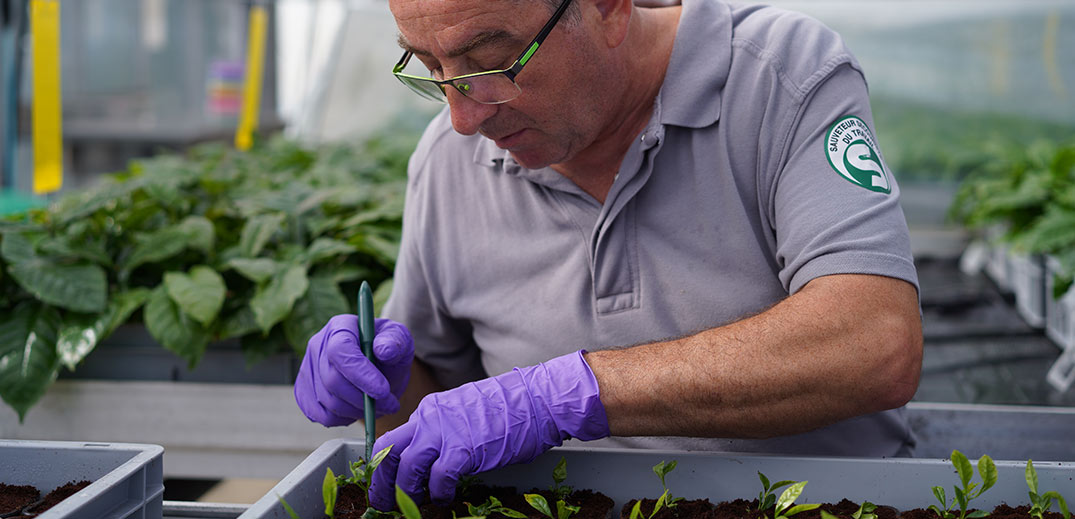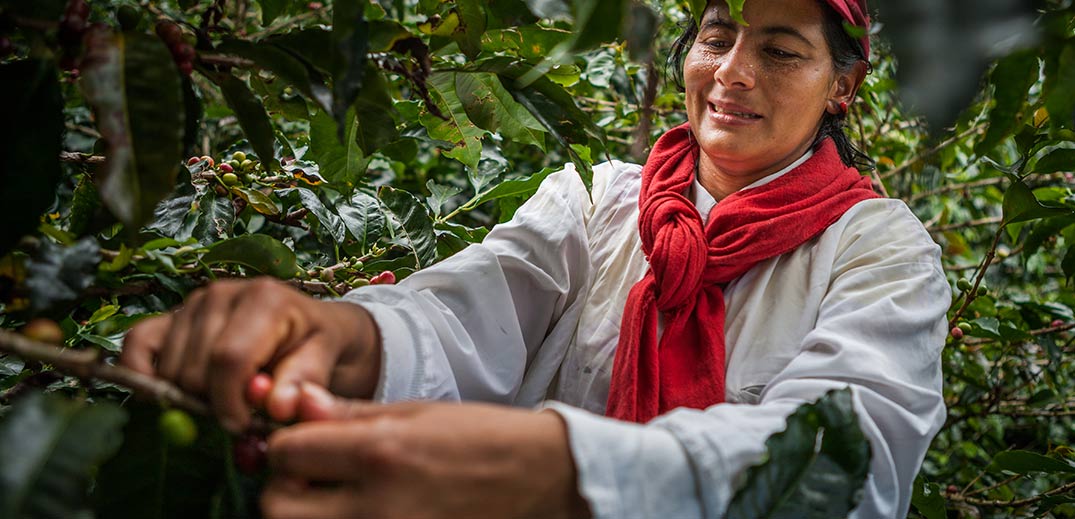The scientists sort through volumes of data and analysis and apply their knowledge to develop next-generation coffee varieties with a lower environmental impact.
Sharing the knowledge
The new coffee plant development begins with Scientists at the Research Center in Tours, who conduct preliminary studies and record their findings.
But this early research is only the start. The resulting knowledge is then applied to our experimental farms in Ecuador, Thailand and Côte d'Ivoire. There we work with local farmers to breed improved plant varieties that can weather the problems of twenty-first century agriculture, such as the longer dry seasons, higher temperatures and pests and diseases that are resulting from changing climate. Says Julio Torres, plant scientist at Nestlé's experimental farm in Nanegal, Ecuador, "Every cup of coffee for me is different. There are so many profiles and ranges of flavors. Each climatic and soil condition of a region will produce a coffee with unique taste. It's what I love about the world of coffee. There is always something new you can learn as we move toward more sustainable coffee farming."
Every cup of coffee for me is different. There are so many profiles and ranges of flavors. Each climatic and soil condition of a region will produce a coffee with unique taste.Julio Torres Plant scientist at Nestlé's experimental farm in Nanegal, Ecuador
The elite plant materials from the experimental farms are sent to research partners in different countries to be tested under different local growing conditions, after which only the most locally successful are officially registered and made available to coffee growers.
Achieving success: Lower-carbon coffee plants
In April 2021, Nestlé plant scientists announced a major breakthrough: a new generation of lower-carbon coffee varieties that deliver up to 50% higher yields per tree. Because these two new Robusta varieties produce more coffee using the same amount of land, fertilizer and energy, the carbon footprint of the green coffee beans reduces by up to 30%. One of the new varieties has already been successfully trialed and is being grown by farmers in Central America.
Benefitting farmers and the environment
At Nestlé we want to advance regenerative food systems at scale – it is essential to Creating Shared Value (CSV).
With the work our plant scientists are doing in France as well as the rollout of the findings to our international sites, the goal is to attain and spread a deeper knowledge and efficiency of sustainable coffee farming. Most importantly, we want to do this while helping to enrich the lives of people along the way, from farmers and their communities to scientists and consumers.








